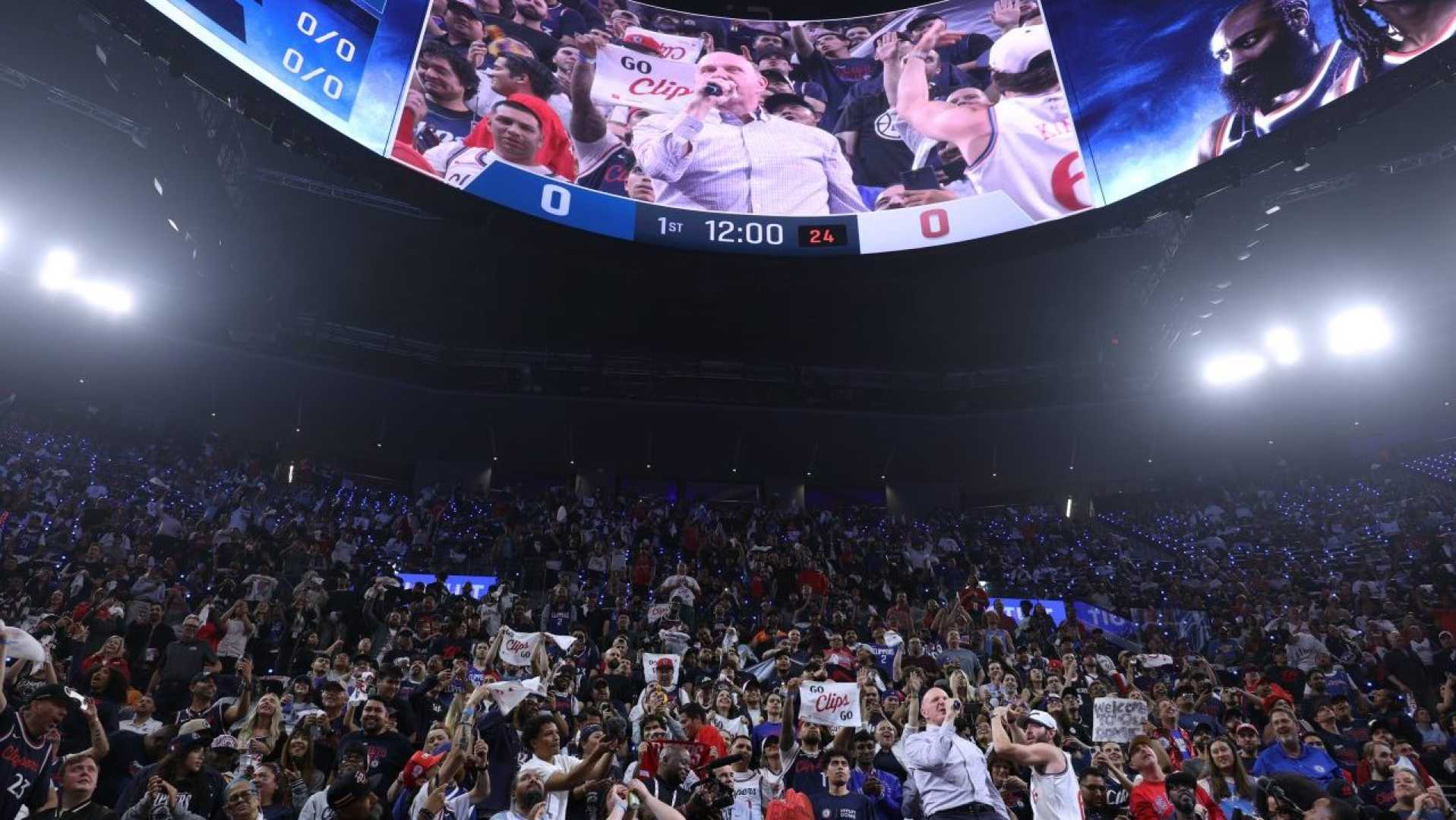Sports
Clippers’ New Arena Creates Unique Challenge for Opponents at Free Throw Line

Los Angeles, CA – The Los Angeles Clippers are redefining home-court advantage with the introduction of their new arena, the Intuit Dome, where opponents face a unique challenge at the free-throw line. During the initial season at the $2 billion venue, visiting teams shot just 74.8% from the charity stripe, the second-lowest percentage in the NBA, edging out only the Houston Rockets’ Toyota Center at 74.0%.
A standout feature of the arena is The Wall, a steep section with 51 rows of seats located behind the opposing team’s basket, designed specifically to intimidate free-throw shooters. Tickets for this section are available solely to certified Clipper fans, and cheering for other teams is strictly prohibited. This dedication to creating an imposing atmosphere has proven effective; visiting teams shot only 73.4% in free throw attempts directly at The Wall, a figure that would rank as the worst in the league.
“Yeah, it was crazy,” Phoenix Suns star Kevin Durant commented after his experience at the Intuit Dome in October, noting his struggles in the fourth quarter. “I was just staring at it the whole time. You’re not used to that.”
The sharp decline in opponents’ free-throw accuracy at the Intuit Dome starkly contrasts with their 76.1% success rate on the opposite end of the court. The Clippers’ free throw advantage is not entirely unexpected; historical data shows that a comparable decline in free-throw shooting has been observed in various arenas since 2011. However, the Clippers’ arena has achieved a notable 4.7% discrepancy against The Wall.
Such dips in shooting efficiency have been minimal, with only one occurrence since 2000 surpassing the current figures. In 2014, opponents of the Oklahoma City Thunder registered a combined free-throw shooting percentage of just 69.8%. Yet, subsequent seasons saw those opponents revert to average performances, indicating that external factors beyond the arena’s design could be at play.
Statistical analysis sheds light on trends across other venues. For instance, since opening in 1999, the Denver Nuggets’ visiting opponents have shot 1.1% below the league average from the foul line—attributed to the challenges of acclimating to high altitudes. Various factors, including the design of the arena, could foster an anti-shooter bias, as suggested by basketball analytics.
Fans and analysts are beginning to wonder if owner Steve Ballmer’s investment has created a structural competitive edge, despite arguments that the Clippers encountered poorer shooting teams throughout the season. In addition to free throws, road teams managed only 33.5% shooting from beyond the arc in the Intuit Dome, ranking as the second-lowest in the league.
Head Coach Tyronn Lue is optimistic about the new home court’s significance. “We have our own building. We don’t have to worry about other banners hanging up. We don’t share an arena. This is home,” said Lue. He noted that The Wall and the enthusiastic fanbase have been pivotal in creating a formidable home environment for the team.
The inspiration for The Wall originated from discussions with Borussia Dortmund executives about their famed Yellow Wall, a large standing section of fans. Clippers officials conducted extensive research on fan engagement in sports globally before launching the concept. The focus ultimately was to create an environment that fosters home-team advantage.
Beyond The Wall, the Intuit Dome incorporates other innovative features meant to enhance team performance and fan experience. The 44,000-square-foot LED “Halo” scoreboard provides an expansive platform for immersive fan engagement, while decibel readers gauge which sections produce the loudest cheers—offering rewards for the most animated supporters.
As the Clippers gear up for the playoffs, they face a formidable opponent: the Denver Nuggets, who have historically wielded an exceptional home court advantage themselves. Given the Nuggets’ impressive home winning percentage, the Clippers will need every bit of their new venue’s purported edge to advance.
While it’s evident that the basketball dynamics within the Intuit Dome have shifted, the long-term effects of such changes will only be apparent with time. Should opponents’ free-throw shooting improve in upcoming seasons, the narrative around the effectiveness of The Wall would shift. For now, the outcome remains uncertain as both statistical history and the unpredictability of the sport continue to unfold.












